 Research Article
Research Article
Assessment on Livestock Production: Opportunities and Challenges to Livestock Household in Welkayt District
Friat Kidanemariam1, Haben Fesseha2*
1College of Veterinary Science, Mekelle University, P.O. Box: 2084, Mekelle, Ethiopia
2School of Veterinary Medicine, Wolaita Sodo University, P.O. Box: 138, Wolaita Sodo, Ethiopia
Haben Fesseha, School of Veterinary Medicine, Wolaita Sodo University, Wolaita Sodo, Ethiopia.
Received Date: March 17, 2020; Published Date: April 09, 2020
Abstract
Livestock production is contributing a great role in the livelihood of the rural community although is being challenged by various constraints. A questionnaire based cross sectional study was conducted on 183 individuals (96 farmers, 73 factory workers, 10 peasant association and 4 veterinarians) from November 2014 to April 2015 to assess the existing opportunities and challenges on livestock production in Welkayt district. Individuals were interviewed to obtain information related to marketing information, animal health service and breed status, feed availability and management system on livestock production. Accordingly, the presence of Welkayt Sugar Project, availability of productive breeds (Begait), and proximity to Sudan and Eretria borders for the international market are some of the identified opportunities for livestock development in the district. However, out of the 96 farmer participants indicated insufficient animal feed in the quantity and quality (45.8%), poor technology supply (43.8%) and poor veterinary service provision (41.7%) as the major challenges in the district. Similarly, veterinarian expertise respondents replied as there were insufficient drugs and equipment’s supply in the existing clinic in the district. During the interview all the respondents reflected that there is declining of grazing pasture from time to time. As a result, the animal owners used animal feeds originated from factories and concerning the perception of the respondents since they have a lack of knowledge on the health and feed management of animals’ continuous awareness creation and improvement of the existing breeds using artificial insemination (AI) should put in place.
Keywords: Challenge; Livestock; Opportunity; Production; Welkayt district.
Introduction
Ethiopia’s livestock population is the largest in Africa. Currently, Ethiopian is estimated to have about 56.71 million heads of cattle, 29.33 million heads of Sheep, 29.11 million heads of goats, and 56.87 million poultry [1]. The role played by livestock in the economy of Ethiopia, as in many developing countries, is varied but substantial. Livestock contribute to the production of food (meat, milk, eggs and blood), industrial raw materials (wool, hair, hides and skins), input for crop production (draught power and manure) and export earnings (live animals, skin and hides). They also generate cash income which can be used to purchase food grain, seeds, fertilizer and farm implements [2, 3].
The livestock sector in Ethiopia contributes 16.5% of the national GDP, and 47.7% of the agricultural GDP, 15% of the country’s export earnings and 30% of agricultural employment [1]. This livestock sector has therefore been contributing considerable portion and still promising to rally round the economic development of the country. Despite high livestock population and existing favourable environmental conditions, the current livestock output of the country is still very low. This is associated with a number of complex and inter-related factors such as inadequate feed and nutrition, widespread diseases, poor genetic potential, market problem, inefficiency of livestock development services with respect to credit, extension, marketing, and infrastructure [2, 4-6] and feed shortage in quantity and quality have been a critical problem in Ethiopian livestock production system [7, 8].
Similarly, the above challenges are also expected to exist in Tigray region and Welkayt District in particular. For instance, challenges such as lack of animal feed in quantity and quality (despite existing opportunities like by-products of Welkayt sugar project), breed improvement problems, marketing problems and lack of market-oriented animal keeping, and management and health status problems are some of the constraints for livestock development in the District. There are also opportunities in the District like economically important breed (Begait), feed availability from the sugar industry process, infrastructure development in the environment and market opportunities to the existing factories and export to Sudan and later Eretria. Thus, this study was conducted with the objective of assessing the challenges and opportunities of livestock production in Welkayt District
Materials And Methods
Study Area
A cross sectional study using questionnaire survey was conducted from November 2014 to April 2015 in western zone particularly in Welkayt. The district is situated at geographical coordination of 13044’38” North, 37019’28” East. The District is bordered by Kafta-Humera and Tahtay Adyabo (North), Tselemti and Asgede-Tsimbla (East), Tsegedie and Tselemti (South), Tsegedie and Kafta-Humera (West). The district possesses 28 sub-districts of which 14 are lowlands. The mean annual rainfall of the zone is 1600 mm and annual temperature ranges from 38º C to 40º C in the lowlands and 100 c to 220c in the mid high land and high land of the western zone [1].
Study Design and Method of data collection
Pre-tested questioner was used to obtain all required information. Five sub-districts (Tsebri, Kalema, Maygaba, Maychaa and Bet-Mulu) were selected purposively depend on livestock population of the sub-district and its proximity from the sugar factory. The farmers and sugar project staffs were selected using simple random sampling whereas peasant association officers and veterinarians were included purposively. A total of 183 individuals (96 farmers, 73 factory workers, 10 sub-districts administration officers and 4 veterinarians) were interviewed during the study in district.
Data Management and Statistical Analysis
Data collected from interviewers were stored on separate Microsoft excel spread sheet and coded properly and analyzed using STATA version 12. Descriptive statistics was used to illustrate the frequency and percentage of the variables.
Results
Socio-demographic status of respondents
A total of 183 individuals (96 farmers, 73 factory workers, 10 peasant association and 4 veterinarians) were interviewed in this study out of which 18% were females and 82% were males (Table 1). Among the farmer respondents, 65(67.7%) owned local breed cattle, and 11(11.5%) had cross breed cattle. Besides, 71(74.0%), 82(85.4%) and 19(19.8%) have replied as they owned goats, sheep and camels respectively [Table 2].
Table 1: Demographic feature of all respondents in Welkayt District.
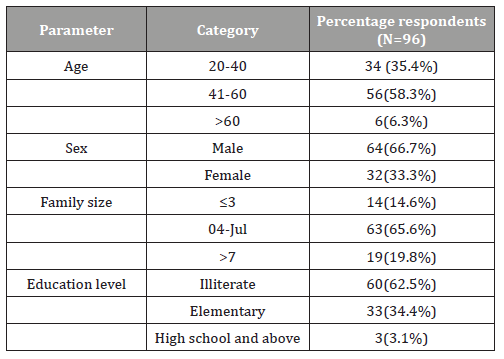
Table 2: Animal types owned by respondent farmers in Welkayt District (N=96).
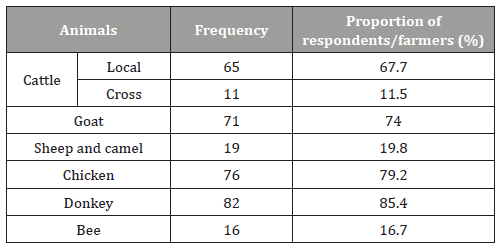
Livestock Products and their Economical Benefit
As per the reply from farmer respondents, animals in the district contributes for various activities among which ploughing, natural fertilizer production and transport service were some of them responded by 49%, 37.5% and 34.4% of the interviewee respectively. At the same time 53.1%,52.1% and 45.8% of the respondents indicated that the animal was used as means of wealth accumulation, for meat production and profit through sailing of animal respectively [Table 3].
Table 3: Livestock products and their economic benefit.
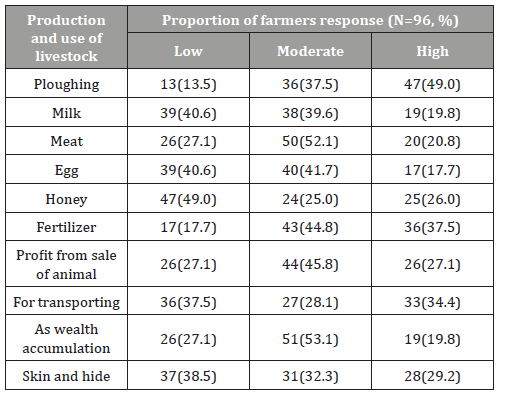
Possible Opportunities for Livestock Development in the District
During the interview of factory workers and veterinarians 64.4% and 75.0% respectively replied that Welkayt Sugar Industry will be helpful for livestock development through developing green animal’s feed using irrigation and utilization of other by-products [Table 4].
Furthermore, 60.0% of peasant association respondents and 74.0% of farmers’ participants responded that as there is a gap on export marketing while 90% of the peasant association indicated domestic market centers are common in the area for livestock and their products utilization [Table 5].
Table 4: View of respondents on opportunities of the Welkayt Sugar industry for livestock development in the District.
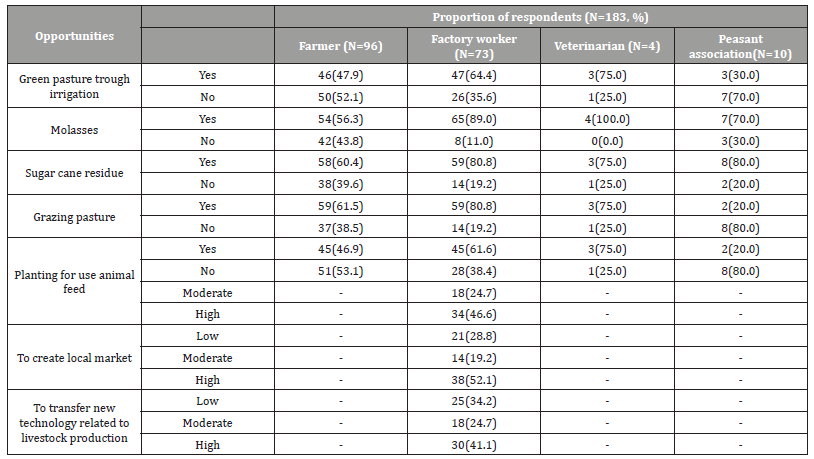
Table 5: Other possible opportunities on livestock development in the District.
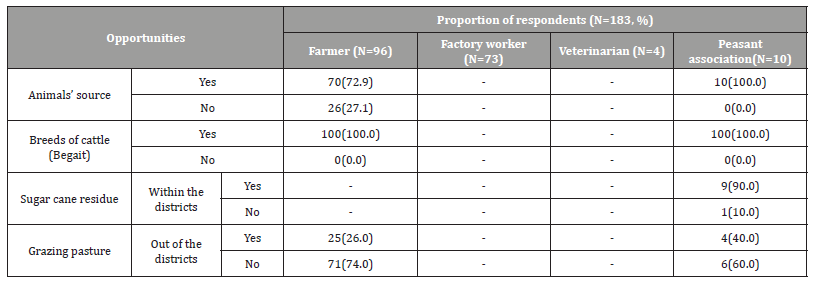
Major Challenges in Livestock Production in Welkayt District
According to the 45.8% of farmers’ respondent and 42.5% of factory workers response, low supply and quality of animals feed is one of the recorded limiting factors for livestock development in the area. Lack of new technology supply has also indicated by 75.0% of veterinary expertise respondents as great challenge in Welkayt District. Moreover, 75% of veterinarians and 42.5% of factory workers responded that there is insufficient improved breed. At the same time, 44.8% of farmers and 75% veterinarians indicated that lack of veterinary expertise is one of the bottlenecks. The major problems in Welkayt district are shortage of feed and lack of professional person [Table 6].
Table 6: Challenges of livestock development in Welkayt District from respondent perspective.
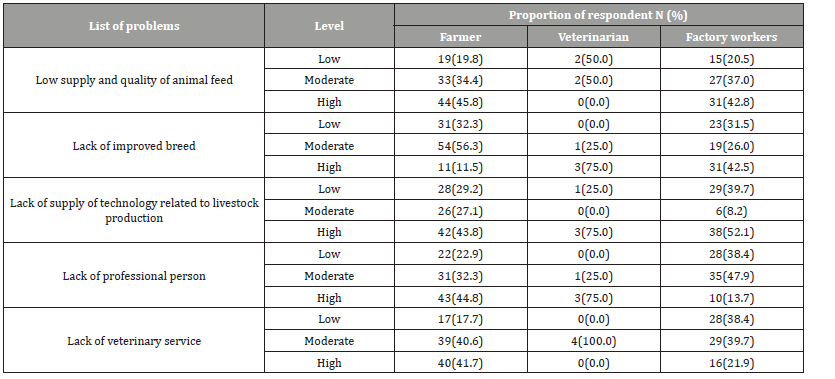
The animal health sector of the district has so many challenges according to the responses of respondents where capacity lack of enough expertise distance of the clinic from their residence and poor public awareness were some of them as explained by 42.0%, 36.5%, 29.2% and 33.3% of the respondents respectively (Table 7). All veterinarian and 39.9% (n= 38/96) farmer participants responded there is insufficient supply of drugs while 65.6% and 50% farmers and veterinarians respectively responded that there are sufficient vaccines available in the districts. with regarded to the attention of the Veterinary Service in the district, 51.1 % of the interviewed farmers responded that veterinary service has got low attention compared with other sectors [Table 8].
Table 7: Farmers perspective on veterinary clinics coverage and its challenges.
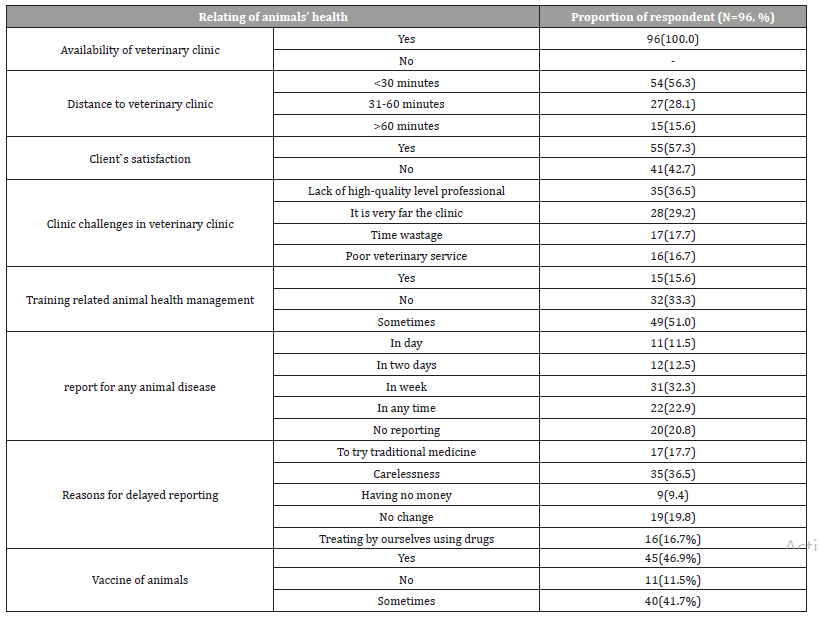
Table 8: Farmers and veterinarians’ perspective on animal health Supply coverage and its challenges.
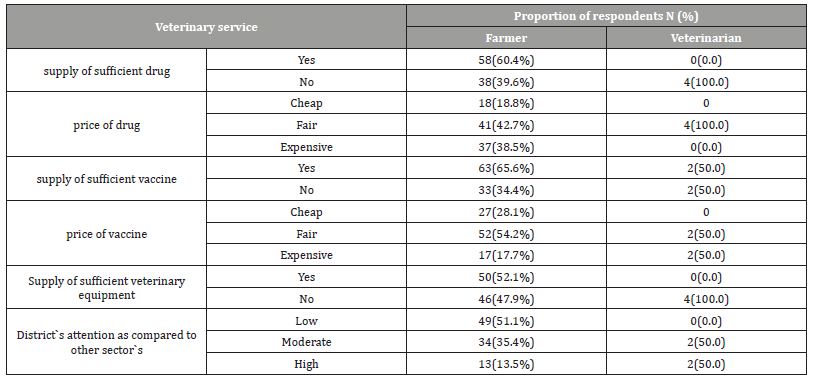
Among research participants 40.6% farmers and 50% peasant association replied that occurrence of diseases in the District is becoming increasing time to time although the idea was not supported by 50% of the veterinary expertise participated in the interview [Table 9].
Table 9: Animal Health Status within last two years.

Table 10: Livestock production from respondent perspective.
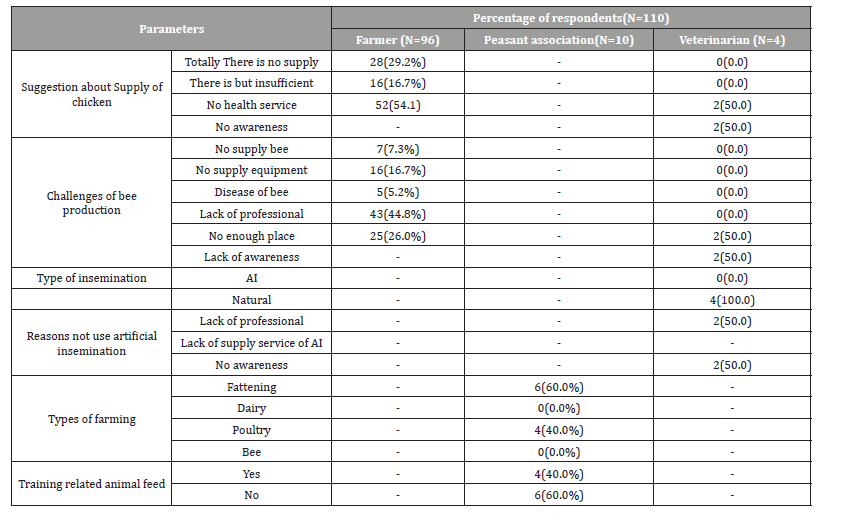
As indicated in [Table 10], reported challenges were lack of health service (54.1% farmer respondents; 50% veterinarian respondents) for poultry, insufficient professionals (44.4% farmer respondents) and insufficient acquisition of lands (50% veterinarian participants) for bee development, and lack of awareness (50% veterinarian respondents) for all animal production types. Besides, 60% farmer interviewees indicated as fattening is commonly practiced production type in the District. Extensive farming system (43.8%) has indicated by farmer respondents as commonly practiced in the District even if 70.8% of them knew intensive farming system as necessary [Table 11]. Among research participants 80.0% Welkayt Sugar Project staffs and 60.0% peasant association indicated that local market for livestock and their product is becoming increasing.
Table 11: Description of respondents on farming system and its status.
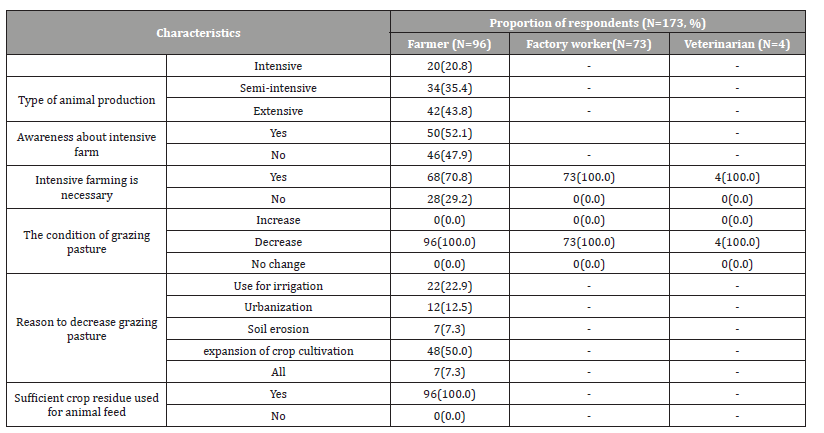
Discussion
In the current study, Welkayt Sugar Industry has indicated as opportunity for livestock development in the district through various means among which creation of local market for live animals and their products, technology transfer, developing green animal’s feed using irrigation, utilization of industry byproducts (including molasses and leave of sugar cane) and leftover for animal feed are most indicated ones. Furthermore, Proximity of the district to Sudan and Eretria and presence of the Begait breeds were other additional opportunities for livestock development in the study area.
The result obtained from the present study (40.6%) with respect to milk production was higher than in Fogera Wereda, Amhara regional state, which was ranged from 1.3% to 18% reported by [9]. This variation could be due to study methodology difference, lack of market access, and breed difference in the area. In the current finding it is indicated that majority of respondent farmers were used their animals for ploughing, natural fertilization, wealth determinant, meat and profit of selling animals as explained by 49%, 37.5%, 53.1%, 52.1% and 45.8% respectively which might be due to lack of awareness.
The major constraint of livestock production of this study was low in quantity and quality of animal feed, lack of animal health and transfer new technology related to livestock production. This result is related with the study of in Dani Districts, Oromia regional state [10] and Fogera Wereda Amhara region of Ethiopia [9].
Moreover the finding of the present study indicated that there is shortage of grazing land in Welkayt district due to expansion of crop cultivation and urbanization, and to a lesser extent through land degradation .The present finding is in agreement with [11] which indicated that grazing land has declined markedly particularly in the highlands, for the same reason. Majority of the respondents were not using intensive farming system which could be due to environment effects and lack of feed source for their animals.
The farmers didn’t use the irrigated pasture areas. But this result opposed to who reported by [12] in highland area of Ethiopia. This variation could be due to use for human food sources and there is also scarcity of land in that area. But such limitation does exist in the areas majority of the respondent agreed that molasses and leave of sugarcane could be animals feed. Consider to the marketing access 60.0% of peasant association respondents and 74.0% of farmers’ participants responded that there is gap on export marketing while 90% of the peasant association indicated domestic market centers are common in the area for livestock and their products. This gap might be due to low quality of livestock product and presence of illegal marketing of livestock. According to the present finding the prevalence of diseases in chicken was reported as 54.1% which is higher compared with that of the report of [13] who reported prevalence of 48.6%.
With regard to the type of service used for animal reproduction all the respondents of the veterinarians indicated that natural mating was used by the community which is in agreement with the finding of [9] who reported that 90.6% were used natural mating, but only 9.4% have access to artificial insemination, this slight variation could be due poor awareness of the community and lack of professional in the current study area.
Regarding to animal health service provision, the study indicated as farmers are facing challenges during their visit to the Veterinary clinic due to lack of professional and distance of veterinary clinic. Among the farmer respondents, 32.3% replied delayed report on disease occurrence in their animals which could be because of carelessness, poor awareness of the community, poor service quality so that they believe as there will no change even though treated as a result, they try to prefer traditional drugs. In parallel to this, veterinarians replied for insufficient drug and equipment supplies even on the existing few veterinary clinics. The reason might be due to low attention on veterinary clinic when compare with other sectors and structural organization perspective. Animal disease and mortality indicated increasing in the district might be because of lack of animal feed in quantity and quality, and indicated poor animal health service provision coverage.
Conclusion and Recommendations
The study showed that majority of the gaps for livestock development in Welkayt District were shortage of feed in quantity and quality, lack of improved breed, lack of supply of technology, decreasing of the traditional grazing lands and poor health services coverage. At the same time there were also lack of awareness on modern animal production, poor quality of animal products, low animal products, market linkage and infrastructure supported with illegal market both for local and export were also other constraints for the sector development in the area. However, opening of the Welkayt Sugar industry for animal feed options and local market creation, proximity of the District to borders for international market, and new knowledge and technology transfer were recorded opportunities in the District for modern livestock development. In conclusion, Intensive public education and extension activities should be done on the District in particular and the Zone in general to efficient utilization of existing opportunities. Besides, Attention should be given on improvement of animal husbandry management, market linkage, breed improvement/selection, introduction of new technology, introduction of intensive farming system, and feed option invention/modification. Accordingly, further studies are also our recommendation on detail dynamics of the livestock sector development in the area in parallel with strategies and directions of the government in the area.
Acknowledgments
No acknowledgements.
Conflict of Interest
No conflict of interest.
References
- Central Statistical Agency, (2013) Population Projection of Ethiopia for All Regions At Wereda Level from 2014–2017. Central Statistical Agency: Addis Ababa.
- Solomon A (2003) Livestock marketing in Ethiopia: a review of structure, performance, and development initiatives. Ethiopia Livestock Marketing Authority 52.
- Tegegne A (2004) Urban livestock production and gender in Addis Ababa, Ethiopia. Urban agriculture magazine (The Netherlands) 12: 31-32.
- Benin S, S Ehui, J Pender (2003) Policies for livestock development in the Ethiopian highlands. Environment, Development and Sustainability 5(3-4): 491-510.
- Jabbar M, A Negassa, T Gidyelew (2008) Geographic distribution of cattle and shoats populations and their market supply sheds in Ethiopia: Discussion Paper No. 2, ESAP Proceedings. in Improving Market Opportunities. Nairobi, Kenya: International Livestock Research Institute.
- Negassa A, S Rashid, B Gebremedhin (2011) Livestock Production and Marketing. Development Strategy and Governance Division, International Food Policy Research Institute–Ethiopia Strategy Support Program II, Ethiopia.
- Gebremedhin B, A Hirpa, K Berhe (2009) An appraisal of fodder marketing in Ethiopia. in Proceedings of the 16th Annual Conference of the Ethiopian Society of Animal Production (ESAP), Addis Ababa, Ethiopia.
- Tolera A (2009) Livestock feed supply situation in Ethiopia. in Proceeding of Commercialization of livestock Agriculture in Ethiopia on the 16th annual conference of Ethiopian society of Animal production (ESAP) held in Addis Ababa, Ethiopia.
- Anteneh B, Tegegne A, Beyene F, Gebremedhin B (2010) Cattle milk and meat production and marketing systems and opportunities for market-orientation in Fogera woreda, Amhara region, Ethiopia 19.
- Duguma B, A Tegegne, B Hegde (2012) Smallholder livestock production system in Dandi district, Oromia Regional State, Central Ethiopia. Global Veterinaria 8(5): 472-479.
- MoARD (2007) Livestock development master plan study phase I report–data collection and analysis, volume N-apiculture, in Addis Ababa, Ethiopia., Ministry of agriculture and rural development (MoARD).
- Mengistu A (2006) Country pasture/forage resource profiles. FAO: Roma, Italia.
- Kibret B (2008) In situ characterization of local chicken eco-type for functional traits and production system in Fogera woreda, Haramaya University, Amhara Regional State.
-
Friat K, Haben F. Assessment on Livestock Production: Opportunities and Challenges to Livestock Household in Welkayt District. Arch Animal Husb & Dairy Sci. 2(1): 2020. AAHDS.MS.ID.000530.
-
Challenge; Livestock; Opportunity; Production; Welkayt district.
-

This work is licensed under a Creative Commons Attribution-NonCommercial 4.0 International License.






